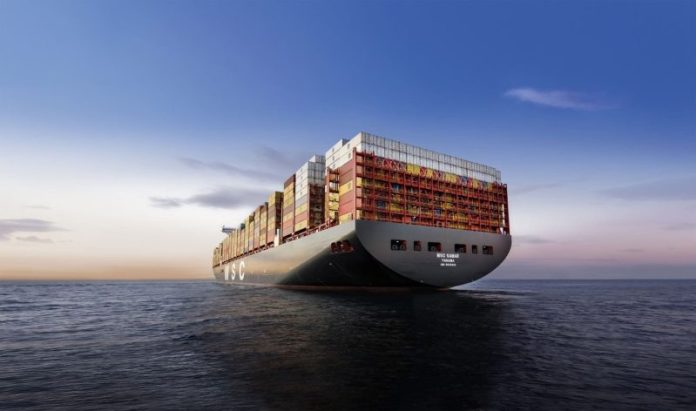
-
Container freight spot rates from Asia to the United States and North Europe decline
-
Deployment of ultra-large newbuilds in July and August likely to push spot rates down
-
Role reversal seen as East Asian economies Japan, Taiwan, and South Korea increase export volumes to the Mediterranean while exports from Southeast Asia decline
Container freight spot rates from Asia to the United States and Northern Europe all fell last week, and industry analysts said a peak season rally is unsure for shipping prices to the two major export destinations this year.
Judah Levine, head of research at the container trading platform Freightos, said any increase in Asia-Northern Europe demand could have difficulty pushing up freight rates in the peak season in view of several new ultra large vessels entering the market in July and August to replace smaller ships.
“Without any significant volume increases yet this month, rates have fallen from early-June GRI (general rate increase) attempts” by container lines, Levine said, adding that the newbuilds would increase capacity, likely putting downward pressure on prices.
Xeneta chief analyst Peter Sand, in his latest blog, said shippers should not expect a massive surge in freight rates going into the traditional peak season starting in July.
Sand also said volatility for more than two years now in the traditionally stable spot freight rates for Asian exports to the Mediterranean and North Europe has led to a wide and enfuring rate spread between the two regions, as the Mediterranean became the strongest market this year.
Sand noted likewise a role reversal between East Asia and Southeast Asia, as Japan, Taiwan, and South Korea increase their export volumes to the Mediterranean in 2023, while Southeast Asian exports shrink.
“Be on the lookout for exports out of Japan, Taiwan, and South Korea, as these nations are growing volumes into the Mediterranean in 2023, whereas exports out of Southeast Asia are falling, despite China’s post-Covid recovery during the spring. This is somewhat of a role reversal, as Southeast Asia exports were much stronger than those from Northern Asia during 2022,” he said.
For the week to June 23, the Freightos Baltic Index showed`prices from Asia to the US West Coast falling 15% year on year to about US$1,200 per 40-foot equivalent units (FEU), lower than the level on May 31.
Rates to the East Coast fell 8% last week to about $2,300/FEU, roughly on par with prices for much of May and just below 2019 levels.
The Panama Canal Authority reported that better weather conditions recently had improved the canal’s watershed and PCA had canceled new draft restrictions meant to go into effect shortly. Those new curbs, if enforced, would limit the canal’s capacity further, possibly pushing rates up, Levine said.
“Rates for US exports have also fallen recently both on easing volumes and on competition among carriers to increase export bookings as import rates that typically subsidize backhaul costs lag,” he said.
FBX US West Coast-Asia rates have fallen more than 20% since March to $589/FEU, 6% above 2019.
Asia-Northern Europe rates fell 4% last week to about $1,260/FEU, and are below May levels and on par with 2019 rates, Freightos said.
Sand wrote in his Xeneta blog the average premium was less than US$100/FEU for shipping containers to the Mediterranean in January 2015-June 2021, but the spread grew when the second wave of Covid-19 sparked new volatility in spot rates.
This spread peaked in Q4 2021, when Far East-North Europe spot rates hit $14,300/FEU, almost $1,000 more than the rates for Mediterranean-bound containers. In May 2022, another extreme was reached, when spot rates for North Europe-bound containers fell faster than those for Mediterranean-bound units.
At that time, the rate spread was $2,300/ FEU for shipping containers via Mediterranean ports than through North European ports. Sand said further market volatility then brought the spread back towards zero, before a new, more enduring divide appeared.
He said imports into Northern Europe in January- April 2023 fell 8.0%, or a 280,000-TEU reduction, while imports into the East Mediterranean grew 21.9%, an increase of 195,000 TEUs. Demand into the West Mediterranean (Italy, France, Spain etc.) grew 2.3% in the same period, he said.
Sand said the Mediterranean is clearly the strongest market now, based on observation backed up by spot rates that are higher than contract rates, in contrast with the North Europe contracted rates that are still slightly above spot market prices.
RELATED READ: Long-term rates track spot market dip




